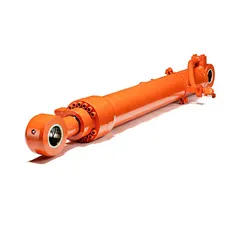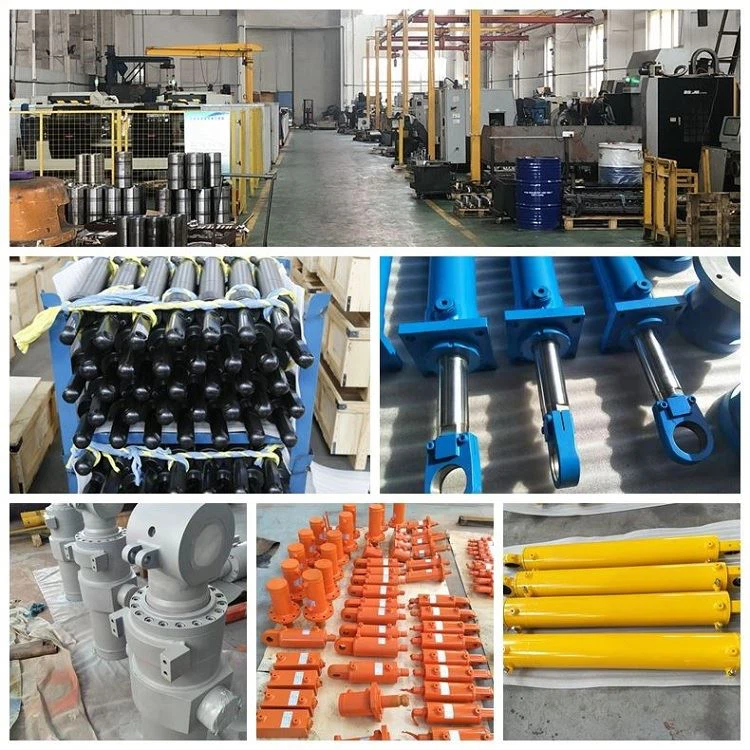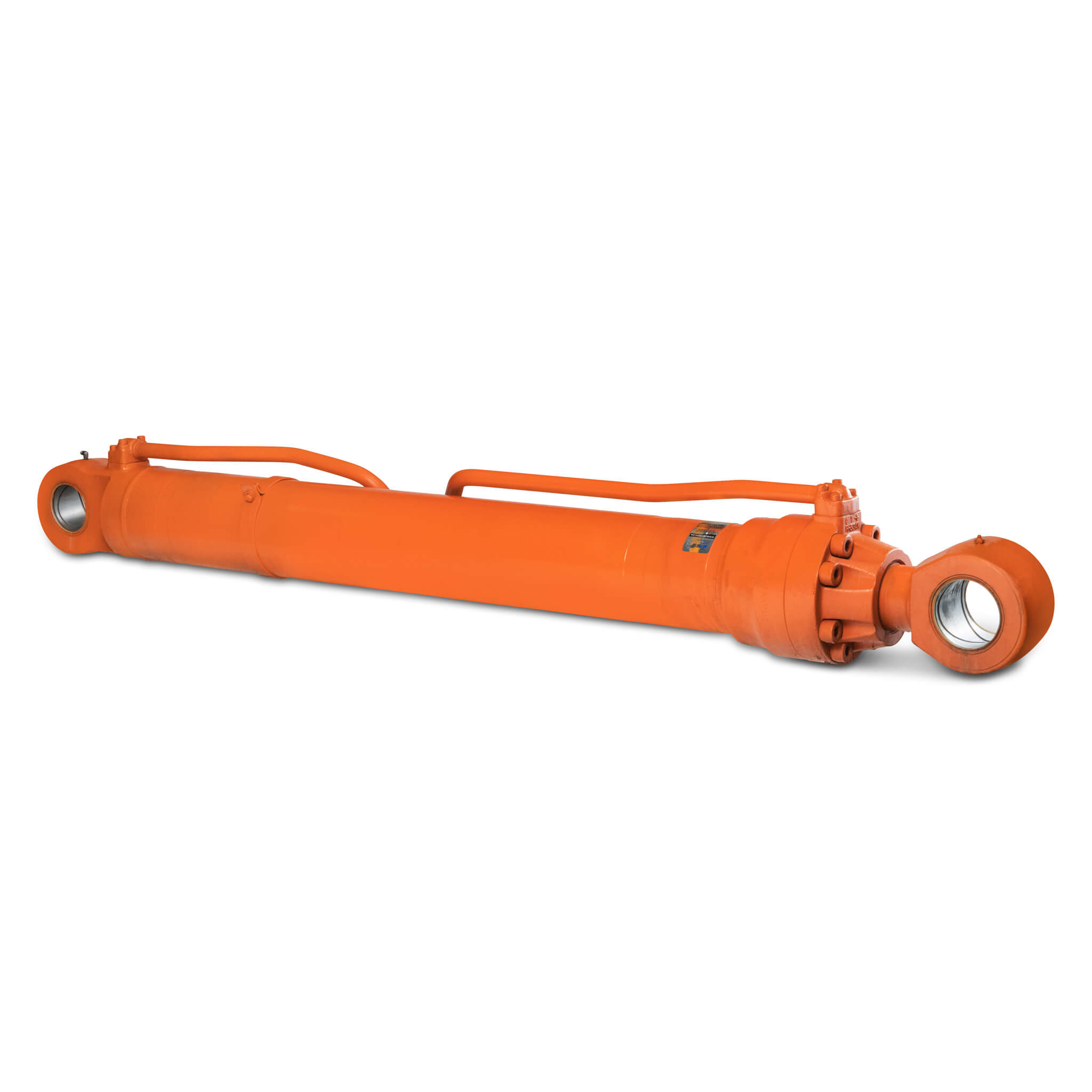Product Description
| Excavator Hydraulic Cylinder Arm Boom Bucket Cylinder For famous brand excavator | |||
| Part number | Tube dia mm | Rod dia mm | Stroke mm |
| 205-63-57100 | 120 | 85 | 1285 |
| 206-63-57100 | 120 | 85 | 1285 |
| 205-63-57160 | 120 | 85 | 1285 |
| 205-63-57120 | 135 | 95 | 1490 |
| 203-63-57130 | 125 | 85 | 1120 |
| 203-63-57131 | 125 | 85 | 1120 |
| 205-63-57130 | 125 | 85 | 1120 |
Specifications
1.Supply to USA,Europe,and Australia, Russia.
2.Material:Stainless Steel
3.Professional performance excavator parts supplier
4. High quality and low price
FAQ
Q1: Are you Manufacture or Trade Company?
A1: We are manufacture,we have 20 years experience for supply Metal material and products in domestic.
Q2: How can we guarantee quality?
A2: Always a pre-production sample before mass production;Always final Inspection before shipment;
Q3: What is your terms of payment ?
A3: 1.T/T: 30% deposit in advance, the balance 70% paid before shipment
2.30% down payment, the balance 70% paid against L/C at sight
3.CHINAMFG negotiation
Q4: Can you provide Certificates for aluminum materials ?
A4:Yes,we can supply MTC-Material Test Certificate.
Q5: Can you provide sample?
A5: Yes, we can provide you sample, but you need to pay for the sample and freight firstly. We will return the sample fee after
you make an order.
| Certification: | GS, RoHS, CE, ISO9001 |
|---|---|
| Pressure: | Medium Pressure |
| Work Temperature: | Normal Temperature |
| Acting Way: | Double Acting |
| Working Method: | Piston Cylinder |
| Adjusted Form: | Switching Type |
| Customization: |
Available
|
|
|---|

How does a boom cylinder handle variations in environmental conditions?
A boom cylinder is designed to handle variations in environmental conditions effectively. Here’s a detailed explanation:
Environmental conditions can vary significantly in different work environments where heavy equipment operates. Boom cylinders are constructed to withstand these variations and continue to function reliably. Here are some ways in which boom cylinders handle variations in environmental conditions:
- Sealing and Protection: Boom cylinders are equipped with seals and protective measures to prevent the intrusion of contaminants, such as dust, dirt, water, or debris. The seals help maintain the integrity of the hydraulic system and protect internal components from damage caused by environmental factors. Additionally, protective coatings or treatments are often applied to the cylinder’s exterior to enhance its resistance to corrosion and wear.
- Temperature Resistance: Boom cylinders are designed to operate within a wide temperature range. They are constructed using materials that can withstand both high and low temperatures without compromising performance. Specialized seals and hydraulic fluids are utilized to maintain proper functionality and prevent damage, even in extreme temperature conditions.
- Fluid Compatibility: Hydraulic fluids used in boom cylinders are carefully selected to ensure compatibility with the anticipated environmental conditions. Factors such as temperature, humidity, and chemical exposure are taken into account when choosing the appropriate hydraulic fluid. The selected fluid should have the necessary viscosity and additives to provide optimal lubrication, prevent foaming, and resist degradation under the specific environmental conditions.
- Corrosion Resistance: Boom cylinders are often exposed to environments that may contain corrosive elements, such as saltwater, chemicals, or acidic substances. To handle these conditions, cylinders are manufactured using materials that exhibit high corrosion resistance. Protective coatings, such as chrome plating or specialized paint, can be applied to further enhance the cylinder’s ability to withstand corrosive environments.
- Regular Maintenance: Proper and regular maintenance is essential to keep boom cylinders in optimal condition and mitigate the effects of environmental variations. This includes inspections, cleaning, lubrication, and seal replacements as needed. By following manufacturer-recommended maintenance schedules and procedures, operators can address potential issues early on and ensure the longevity and reliability of the boom cylinders.
By incorporating sealing and protection mechanisms, temperature resistance, fluid compatibility, corrosion resistance, and regular maintenance practices, boom cylinders are designed to handle variations in environmental conditions. These features enable them to operate effectively and maintain their performance in diverse work environments, including construction sites, mining operations, forestry applications, and more.
It’s important to consult the equipment manufacturer’s guidelines and recommendations for specific environmental considerations and maintenance practices related to boom cylinders. This will help ensure the proper functioning and longevity of the cylinders in various operating conditions.

How does a boom cylinder contribute to stable and safe equipment operation?
A boom cylinder plays a crucial role in ensuring stable and safe equipment operation. Here’s a detailed explanation:
A boom cylinder is a hydraulic actuator that is commonly used in various types of equipment, such as cranes, excavators, loaders, and aerial lifts. Its primary function is to provide the necessary force and controlled movement to extend, retract, and articulate the boom or arm of the equipment.
Here are several ways in which a boom cylinder contributes to stable and safe equipment operation:
- Load Handling: A boom cylinder is responsible for lifting and manipulating loads. By providing the necessary force and controlled movement, it allows operators to handle materials with precision and stability. The cylinder’s ability to support and control the load ensures that it remains stable during lifting, lowering, and positioning, minimizing the risk of accidents or load instability.
- Operator Control: Boom cylinders enable operators to have precise control over the movement of the equipment’s boom or arm. This control is crucial for performing tasks accurately and safely. The smooth and controlled movement facilitated by the cylinder allows operators to position the equipment and its attachments precisely, reducing the likelihood of unintended movements or sudden shifts in load.
- Stability and Balance: A properly functioning boom cylinder helps maintain the stability and balance of the equipment. It ensures that the boom or arm remains in the desired position, even when subjected to external forces or uneven terrain. This stability and balance contribute to safe operation, preventing tip-overs, excessive swaying, or loss of control.
- Overload Protection: Boom cylinders are often equipped with overload protection mechanisms. These mechanisms prevent the equipment from being subjected to excessive loads beyond its capacity. When the load exceeds a safe threshold, the cylinder’s overload protection system activates, either by limiting the movement or providing a warning signal to the operator. This feature helps prevent equipment damage and promotes safe operation.
- Structural Integrity: Boom cylinders are designed to withstand high forces and loads. They are built with robust materials and undergo rigorous testing to ensure structural integrity and durability. The cylinder’s strength and reliability contribute to the overall stability and safe operation of the equipment.
Overall, a boom cylinder plays a vital role in ensuring stable and safe equipment operation. It provides load handling capabilities, operator control, stability and balance, overload protection, and structural integrity. These factors combine to minimize risks, enhance operator safety, and promote efficient and secure equipment operation.
It’s important to follow the manufacturer’s guidelines and recommendations regarding the installation, operation, and maintenance of boom cylinders to ensure their proper functioning and optimal safety.

What are the key components and features of a boom cylinder?
A boom cylinder consists of several key components and features that enable its functionality and performance in heavy machinery. Here’s a detailed explanation:
- Cylinder Barrel: The cylinder barrel is the main body of the boom cylinder, typically made of high-strength steel. It houses the piston, seals, and other internal components. The cylinder barrel is designed to withstand high pressure and provide structural integrity to the cylinder.
- Piston: The piston is a cylindrical component that moves back and forth inside the cylinder barrel. It is usually made of durable materials and acts as a barrier between the two chambers of the cylinder. The piston divides the cylinder into a rod side and a cap side, allowing hydraulic fluid to act on one side or the other to create the desired motion.
- Rod: The rod is a solid metal shaft attached to the piston and extending outside the cylinder barrel. It transmits the force generated by the hydraulic fluid to the boom or other connected components. The rod is designed to withstand tensile and compressive forces and is often coated or treated to resist corrosion and wear.
- Seals: Seals are essential components that prevent hydraulic fluid leakage and maintain the integrity of the cylinder. They are positioned between the piston, rod, and cylinder barrel to create a tight seal. Common types of seals used in boom cylinders include piston seals, rod seals, and wiper seals.
- Ports and Fittings: Boom cylinders have ports and fittings that allow the connection of hydraulic hoses or pipes to supply hydraulic fluid. These ports enable the controlled flow of hydraulic fluid into and out of the cylinder, creating the necessary pressure for boom movement.
- Mounting Brackets: Mounting brackets are used to attach the boom cylinder to the heavy machinery’s frame or structure. They provide stability and support, ensuring proper alignment and secure installation of the cylinder.
- Internal Cushions: Some boom cylinders feature internal cushions or shock absorbers. These cushions help dampen the impact and reduce vibrations during the extension or retraction of the boom. Internal cushions improve the smoothness of boom movement, enhance operator comfort, and reduce stress on the cylinder and other components.
- Corrosion Protection: Boom cylinders are often coated or treated with corrosion-resistant materials to withstand harsh environmental conditions. These protective measures help extend the cylinder’s lifespan and maintain its performance over time.
- Load Capacity and Pressure Rating: Boom cylinders are designed with specific load capacities and pressure ratings to handle the heavy loads and pressures involved in heavy machinery operations. The load capacity and pressure rating determine the cylinder’s strength and suitability for different applications.
In summary, the key components and features of a boom cylinder include the cylinder barrel, piston, rod, seals, ports and fittings, mounting brackets, internal cushions, corrosion protection, load capacity, and pressure rating. These components and features work together to enable the controlled extension, retraction, lifting, and lowering of the boom in heavy machinery, ensuring efficient and reliable operation.


editor by CX 2023-12-07